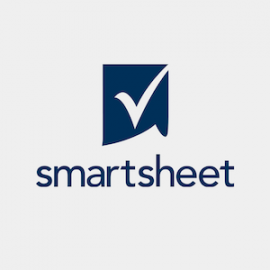Learn why enterprises should adopt AI-as-a-Service solutions.

For every application available on-premises, it’s almost certain it will also eventually be available as a cloud-based service, delivered on demand, by a cloud service provider. A somewhat recent addition to the growing field of cloud-based services is AI as a Service (AIaaS). With AIaaS, companies can enjoy the benefits of AI without having to make upfront investments in hardware and software. And in the case of AI, the savings can be significant.
After decades as fodder for science fiction movies, the use of artificial intelligence in business has exploded. Companies use AI for everything from customer service and marketing to process automation, security, and business and sales forecasting. In fact, a study by strategic advisors NewVantage found nine out of 10 top businesses have an ongoing investment in AI. A 2019 study by IT researcher Gartner found 37% of organizations in 2019 actually used AI in the workplace.
SEE: Artificial Intelligence Ethics Policy (TechRepublic Premium)
However, for small and medium companies, the same Gartner report, only 29% said they have adopted AI. This is at least somewhat influenced by the knowledge that specialized AI hardware is required and is often cost prohibitive. This is because a generic off-the-shelf server could be used, but because of the massive processing power required, it is not ideal and would bring productivity to a grinding halt.
And that’s just the investment for hardware. Then there’s the software, programming and training of models, which require specially trained data scientists, who command significant salaries. With AIaaS, companies of any size can enjoy the benefits of AI research, machine learning and analytics on demand and via the cloud.
When should enterprises adopt AIaaS?
Like every other technology, AI has been adopted slowly and incrementally. Businesses dip their toe in the water before diving in headfirst to try it out and see if it delivers on its promise. So, the initial rollout of early AI projects is generally measured and modest. Smaller companies are especially risk averse.
AIaaS is especially valuable for companies that don’t expect to do much AI work from the start. AI breaks down into a two-step process: Training and inference. The training part is the compute-intensive part, but the inference has much lower power requirements and can be handled with a much less powerful, non-specialized processor.
Now let’s say you only plan to deploy about two or three AI projects and you’ve chosen to invest in specialized hardware. Because you can’t repurpose an AI training server as a general-purpose database server, it will sit unused.
Conversely, if you’re doing multiple AI projects each year, then you may consider taking a hybrid approach and investing in an on-premises system. This is because cloud services employ a pay-as-you-go model for all the compute power needed to ingest and process data as well as all associated applications for storage, databases, networking and analytics. Ambitious AI projects generate massive amounts of data. Known as “data gravity” AIaaS projects can multiply the requirements for additional capacity and services, which drives up cost. This can easily blow up the cloud service provider (CSP) bill, and eventually it becomes more economically feasible to bring these workloads on premises.
How AIaaS democratizes AI
There are a variety of programming languages for AI, from the common and ubiquitous (Python, C++) to the esoteric (R, Rust). This can prove challenging for a non-data scientist, who may not have any coding ability or understanding of data science beyond the basics. And all too often, non-data scientists are being tasked with owning AI projects because there are simply not enough skilled programmers and data scientists to meet the ever-growing demands for their skills.
Fortunately, CSPs that offer AIaaS services also offer no-code infrastructures for non-programmers. No-code tools and services are those that allow people to build applications without having to program them in the traditional way of writing, testing and debugging source code. Instead, the core functionality is created through visual tools much like a flowchart, where actions are taken based on preset conditions. If you ever use Microsoft Visio, you have an idea of how this works.
No-code is empowering business users to do the job of programmers, but the downside is that the applications tend to be simplistic. If you want fine-grained, precise control and action of complex AI models, you still need to program the application.
But no code is still very good for getting started writing simple AI apps, easing the burden on data scientists who have much more demanding tasks ahead of them and perhaps writing a simple chat bot.
Finally, the pros and cons of whether an AIaaS approach or an on-premises/hybrid approach to AI should be carefully considered and take into account costs, time and workforce specialization. For those just starting out or doing a limited number of AI projects each year, the benefits of AIaaS may far outweigh alternatives.

Phil Brotherton is the vice president of solutions and alliances at NetApp.
Source of Article



